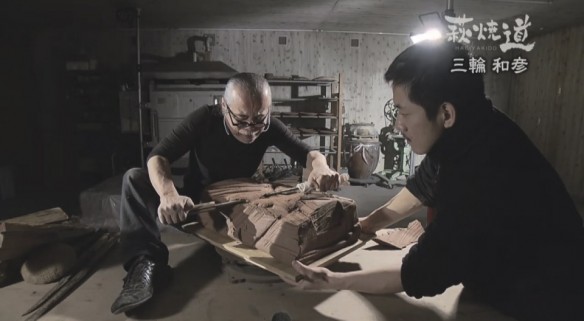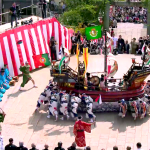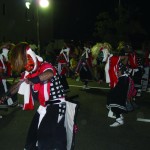DOCUMENTARY

Hagi Ware
DOCUMENTARY
2019
4 minutes Episode(s): 7
english
Japanese


Hagi Ware was created at the end of the 16th century as a gift for the Emperor of Japan. Along with Raku Ware and Karatsu Ware, it is one of the big three traditional earthenware products produced in Japan. Recently, the process of creating Hagi Ware has taken on a new meaning for some potters who strive to melt tradition and modern art together. Watch as the new branch of potters talk about their craft and how their work manages to delicately balance the physical and spiritual into one.
From Japan to the world. They aim to pique global interest and shine a spotlight to this wonderful, ancient artform!
Click here to preview this program!
From Japan to the world. They aim to pique global interest and shine a spotlight to this wonderful, ancient artform!
Click here to preview this program!
Customers who watch this video also watch
-
Nagasaki Kunchi -A Ride on the Nanbansen-
2018 30 mins[Festivals of Japan Season 2] The "Nagasaki Kunchi" is a festival that holds a 380-year history. Dragons coil and children dance to the many performances, giving life and color to the festival stage. One such performance is the dynamic and flamboyant "Dozamachi Nanbansen". It is a reenactment of the heyday...more details -
Miracle of Symphony No. 9 - 6 Years with Yutaka Sado & Ikutokukan Orchestra -
2025 75 minutesIn a breathtaking collaboration that was six years in the making, the Ikutokukan school orchestra - a rare find in Japan's Fukuoka Prefecture - achieved the impossible. They performed Beethoven's 9th Symphony, led by Yutaka Sado, the world-renowned maestro. This program follows the interactions between the legendary conductor and the...more details -
Oni-kenbai: Prayer in Motion
2012 30 minsThe Oni-kenbai demon sword dance has been passed down from fathers to sons to grandchildren, with no additions or amendments for generations. Not simply a dance to pray for happiness, it's to ensure the spirits of ancestors of both dancers and viewers are kept alive, while driving away evil. This...more details -
Love Stories from Fukuoka
2011 50 min Love Stories from Fukuoka is a yearly TV drama that is aired around St. Valentine's Day. Viewers from Fukuoka city, the capital of Japan's southern island of Kyushu, send in stories of their own experiences with love, loss, and longing. The program features many actors, celebrities, and athletes who...more details



